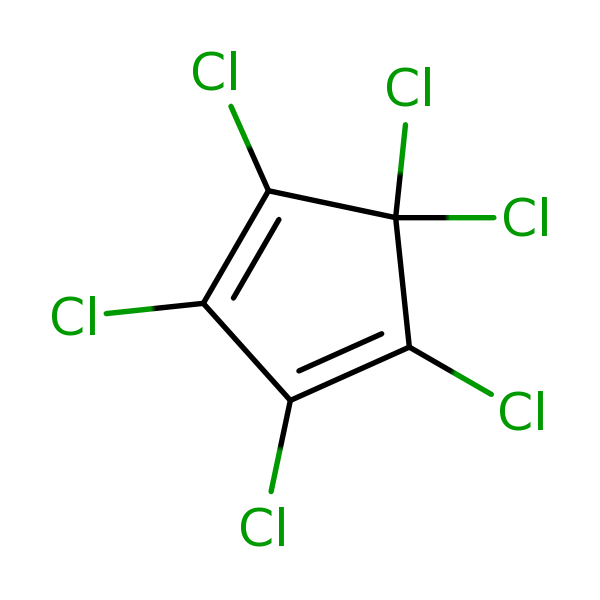Hexachlorocyclopentadiene (HCCPD)
CASRN 77-47-4 | DTXSID2020688
- Toxicological Review (PDF) (60 pp, 237 K)
- IRIS Summary (PDF) (25 pp, 172 K)
Noncancer Assessment
Reference Dose for Oral Exposure (RfD) (PDF)
(25 pp, 172 K)
Last Updated: 07/05/2001
| System | RfD (mg/kg-day) | Basis | PoD | Composite UF | Confidence |
|---|---|---|---|---|---|
| Gastrointestinal | 6 x 10 -3 | Chronic irritation |
BMDL
10
:
6
mg/kg-day |
1000 | Low |
Reference Concentration for Inhalation Exposure (RfC) (PDF)
(25 pp, 172 K)
Last Updated: 07/05/2001
| System | RfC (mg/m3) | Basis | PoD | Composite UF | Confidence |
|---|---|---|---|---|---|
| Respiratory | 2 x 10 -4 | Suppurative inflammation of the nose |
NOAEL
(HEC):
2.4
x 10-2 mg/m3 |
100 | Medium |
Cancer Assessment
Weight of Evidence for Cancer (PDF)
(25 pp, 172 K)
Last Updated: 07/05/2001
| WOE Characterization | Framework for WOE Characterization |
|---|---|
| E (Evidence of non-carcinogenicity for humans) | Guidelines for Carcinogen Risk Assessment (U.S. EPA, 1986) |
| Not likely to be carcinogenic to humans | Proposed Guidelines for Carcinogen Risk Assessment (U.S. EPA, 1996) |
- According to the existing Guidelines for Carcinogen Risk Assessment (U.S. EPA, 1986a), evaluation of the weight-of-evidence for carcinogenicity to humans indicates that HCCPD is most appropriately categorized as Group E, Evidence of Noncarcinogenicity to Humans, via inhalation exposure. In accordance with U.S. EPA's Proposed Guidelines for Carcinogen Risk Assessment (U.S. EPA, 1996), HCCPD is not likely to be a human carcinogen by the inhalation route based on current data indicating no evidence of cancer in well-conducted bioassays in two species of rodents; the absence of increased deaths from cancer in the limited human occupational studies available; and lack of mutagenicity in a variety of test systems.
- This may be a synopsis of the full weight-of-evidence narrative.
Quantitative Estimate of Carcinogenic Risk from Oral Exposure (PDF) (25 pp, 172 K)
Not assessed under the IRIS Program.
Quantitative Estimate of Carcinogenic Risk from Inhalation Exposure (PDF) (25 pp, 172 K)
Not assessed under the IRIS Program.
- Human Health Benchmarks for Pesticides (HHBP). This database provides human health benchmarks for pesticides that may be present in drinking water.
- Office of Pesticide Programs Pesticide Chemical Search. This database provides links to health effects information and registration status for pesticides.
- Chemistry Dashboard. This database provides information on chemical structures, experimental and predicted physicochemical, and toxicity data.
You will need Adobe Reader to view some of the files on this page. See EPA's PDF page to learn more.
Contact Us to ask a question, provide feedback or report a problem.



